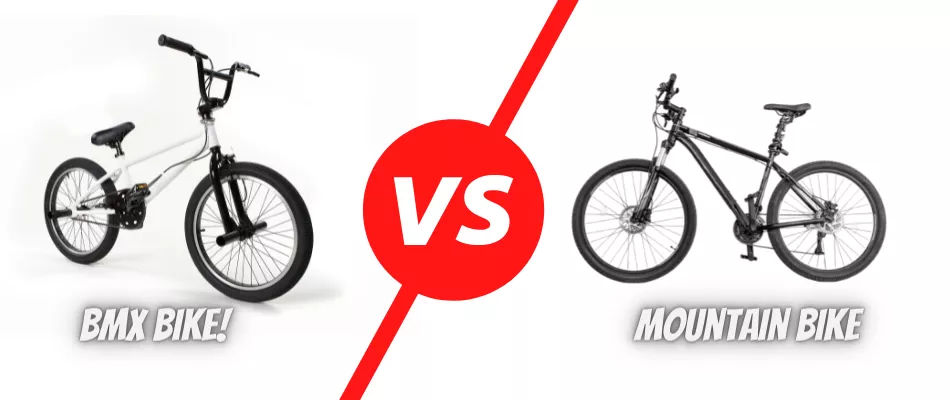


Difference Between Mountain Bike and BMX:
Exploring Two Distinct Cycling Worlds
Read More : ” Is Mountain Biking A Good Workout? “
When it comes to cycling, the wide variety of bikes available can be both exciting and overwhelming. Among the many options, mountain bikes and BMX bikes stand out as popular choices, each designed for unique riding experiences.
Understanding the difference between mountain bikes and BMX bikes can help you choose the one that best suits your preferences and riding style.
Mountain bikes are built for off-road adventures, tackling rugged terrains with ease. They feature sturdy frames, wide tires with substantial grip, and efficient suspension systems for a smooth and controlled ride.
Mountain biking is all about conquering challenging trails, enjoying nature, and testing your endurance.
On the other hand, BMX bikes are made for more extreme and urban environments. BMX stands for Bicycle Moto Cross, and these bikes are designed for tricks, jumps, and stunts.
They have smaller frames, compact tires, and often lack suspension to reduce weight and increase maneuverability.
In this article, we will delve into the details of mountain bikes and BMX bikes, comparing their components, purposes, and riding styles, so you can make an informed decision based on your interests and needs.
Whether you crave adrenaline-pumping downhill adventures or prefer mastering gravity-defying tricks, understanding the difference between mountain bikes and BMX bikes is the first step towards a thrilling cycling journey.
Purpose and Terrain: Off-Road vs. Urban Environments
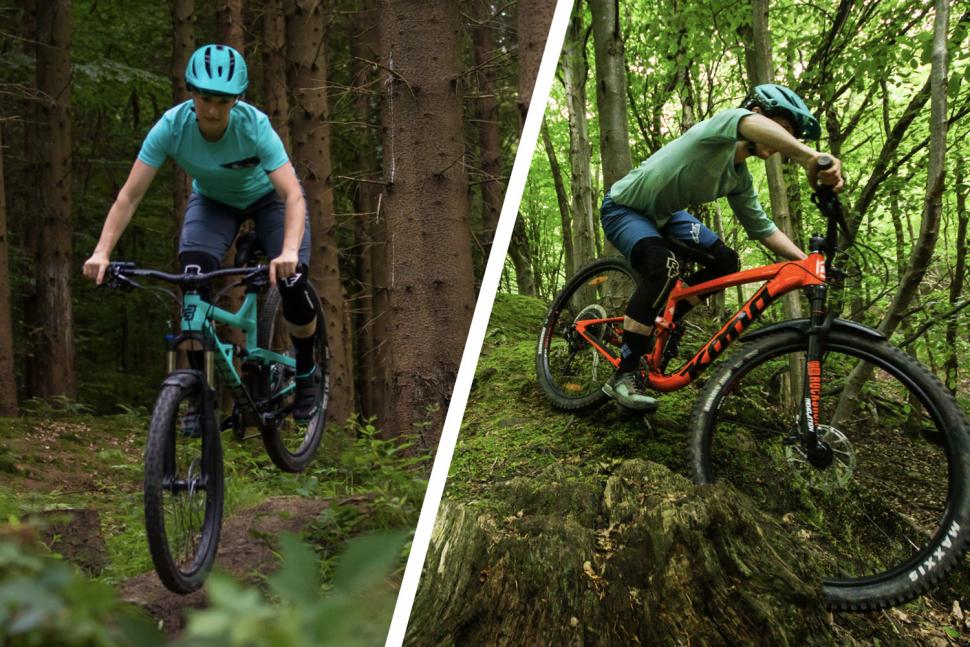


Purpose and Terrain: Off-Road vs. Urban Environments
Read More : ” How Long Should Mountain Bike Tires Last? “
Mountain bikes and BMX bikes are designed with distinct purposes in mind, catering to different terrains and riding styles.
Understanding the differences between the two is crucial for selecting the appropriate bike for your cycling needs.
Mountain Bikes:
Mountain bikes are specifically engineered for off-road adventures, making them ideal for tackling rugged and challenging terrains. They feature sturdy frames and powerful suspension systems to absorb shocks and vibrations while navigating uneven trails and rough landscapes.
The wide and knobby tires provide exceptional traction, ensuring stability and control on dirt, gravel, and rocky paths. With a broad range of gears, mountain bikes are optimized for climbing steep inclines and conquering downhill descents.
These bikes are perfect for riders seeking endurance, exploration, and a thrilling connection with nature.
BMX Bikes:
On the other hand, BMX bikes are built for urban environments and freestyle riding. They boast lightweight frames designed to enhance agility and maneuverability, making them ideal for performing tricks, jumps, and stunts in skate parks or on city streets.
BMX bikes typically come with compact tires that provide better control for executing tricks and quick turns. While they lack suspension systems, the rigid construction allows for more precision and responsiveness during jumps and spins.
BMX bikes cater to riders who seek excitement, adrenaline, and creativity in their cycling experience.
In summary, the purpose and terrain determine the choice between a mountain bike and a BMX bike. Whether you prefer conquering the trails or mastering tricks in urban settings, both types of bikes offer unique and exhilarating experiences.
Related : ” Which Cycle Is Best Fat Bike Or MTB? “
Frame and Construction: Sturdiness vs. Agility
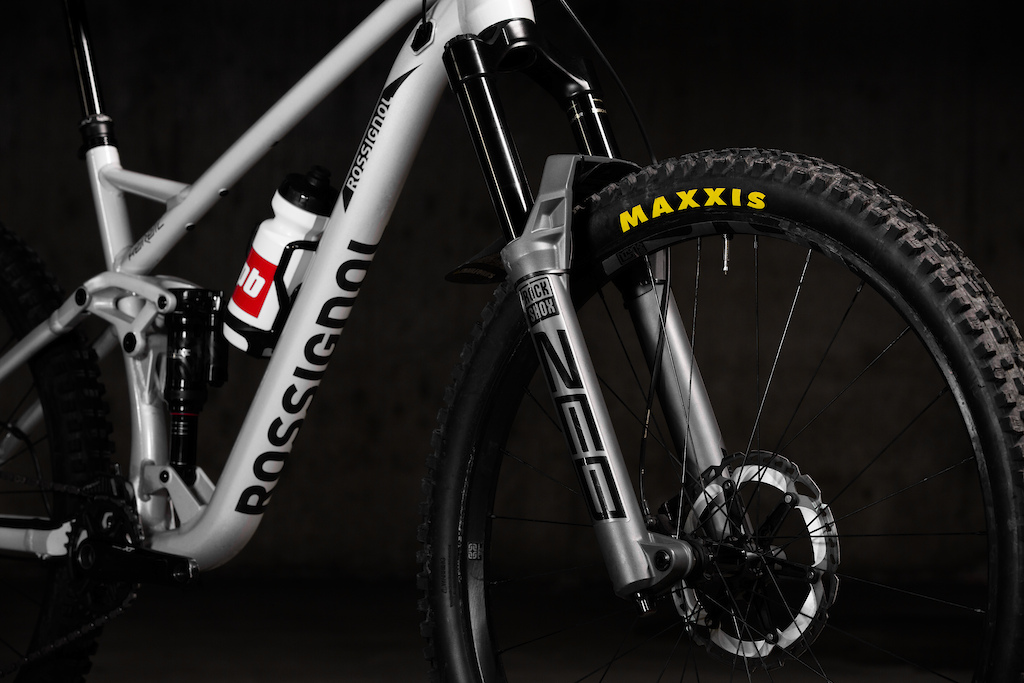


Frame and Construction: Sturdiness vs. Agility
Related : ” Difference Between Mountain Bike And Gravel Bike “
The frame and construction of mountain bikes and BMX bikes differ significantly, impacting their performance and suitability for various riding styles.
Mountain Bikes:
Mountain bikes are constructed with a sturdy and durable frame designed to withstand the rigors of off-road trails. They often feature aluminum or carbon fiber frames, known for their strength and ability to absorb shocks.
The frame geometry is optimized for stability and comfort during long rides over rough terrains. Additionally, mountain bikes come equipped with front and rear suspension systems that further enhance their ability to handle bumps and obstacles.
BMX Bikes:
BMX bikes prioritize agility and responsiveness over ruggedness. They typically have compact, lightweight frames made from steel or chromoly steel, which are better suited for freestyle riding and executing tricks.
The shorter wheelbase and frame design provide enhanced maneuverability, enabling riders to perform flips, spins, and jumps with ease. While BMX bikes lack suspension systems, their construction allows for greater control and precision during aerial maneuvers.
In summary, the frame and construction of mountain bikes focus on durability and comfort for tackling demanding off-road trails. In contrast, BMX bikes prioritize agility and maneuverability for performing tricks and stunts in urban environments.
The choice between the two depends on the rider’s preference for either sturdy and stable performance on rugged trails or agile and dynamic movements during freestyle riding.
Tires and Grip: Wide vs. Compact for Different Terrains
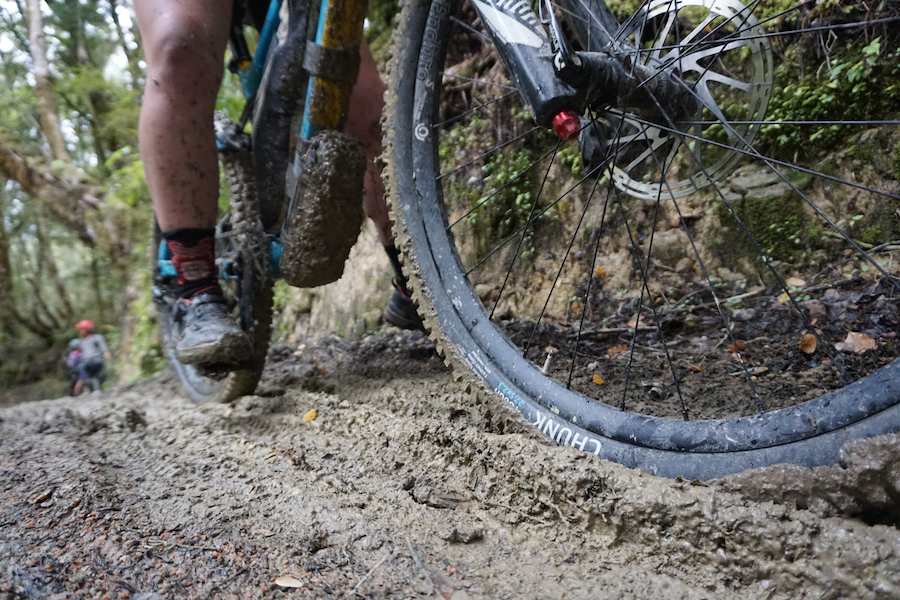


Tires and Grip: Wide vs. Compact for Different Terrains
The tires on mountain bikes and BMX bikes vary in width and design, offering distinct advantages for different terrains and riding styles.
Mountain Bike Tires:
Mountain bikes are equipped with wider and knobbier tires, ranging from 2.2 to 2.6 inches or more. These tires are designed to provide excellent traction and stability on rough and loose surfaces like dirt, rocks, and mud.
The aggressive tread patterns help grip the terrain, ensuring better control and minimizing slippage during climbs and descents. The wider tires also allow for lower tire pressures, providing added comfort and shock absorption.
BMX Bike Tires:
BMX bikes typically come with narrower and smoother tires, often ranging from 1.75 to 2.4 inches. These tires are ideal for riding on smooth and hard surfaces, such as skate parks, street pavements, and ramps.
The smoother tread patterns offer less rolling resistance and promote quicker acceleration. The compact size and reduced weight of the tires enable riders to perform tricks and jumps more effortlessly.
In summary, mountain bike tires are wider and knobbier, prioritizing traction and stability on rough off-road terrains.
On the other hand, BMX bike tires are narrower and smoother, emphasizing speed and maneuverability for tricks and stunts on smoother surfaces.
The choice between wide and compact tires depends on the rider’s preference for the type of terrain and riding they enjoy.
Suspension Systems: Smooth Rides vs. Nimble Maneuverability
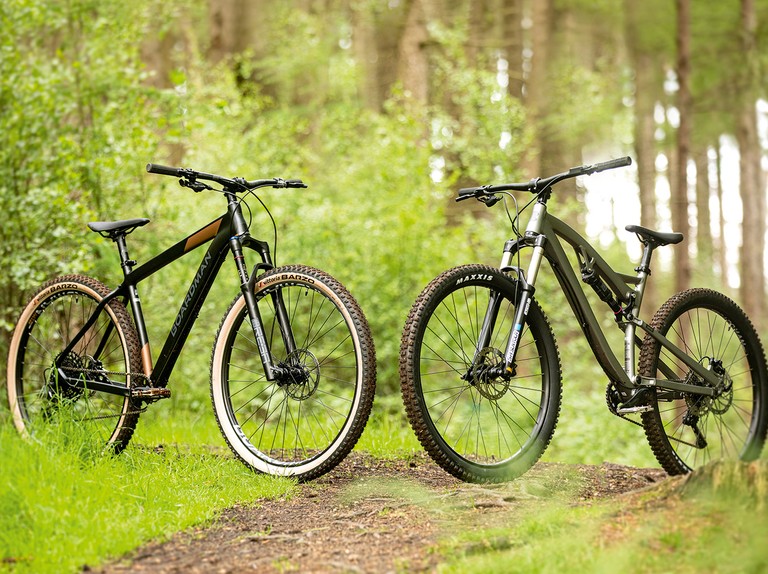


Suspension Systems: Smooth Rides vs. Nimble Maneuverability
The difference between mountain bikes and BMX bikes extends to their suspension systems, which significantly impact their performance and ride experience.
Mountain Bike Suspension:
Mountain bikes are equipped with front and rear suspension systems, commonly known as full-suspension bikes.
The suspension systems feature forks at the front and shock absorbers at the rear, designed to absorb impacts and vibrations from rough and uneven terrains.
This provides a smoother and more comfortable ride, especially when tackling trails with rocks, roots, and obstacles.
The suspension also enhances traction, allowing the bike’s wheels to maintain better contact with the ground, improving control and stability during descents and technical sections.
BMX Bike Suspension:
In contrast, BMX bikes typically have rigid frames without any suspension components. These bikes are purpose-built for agility, maneuverability, and performing tricks.
The lack of suspension provides a direct and responsive feel, allowing riders to execute precise movements and stunts. This design choice prioritizes lightweight and quick handling, making BMX bikes ideal for skate parks, ramps, and urban environments.
In summary, mountain bikes with suspension systems provide smooth rides and better traction on challenging off-road terrains, while BMX bikes with rigid frames offer nimble maneuverability and responsiveness for performing tricks and stunts.
The choice between suspension and no suspension depends on the rider’s preference for terrain and riding style.
Riding Style: Endurance vs. Extreme Tricks and Jumps
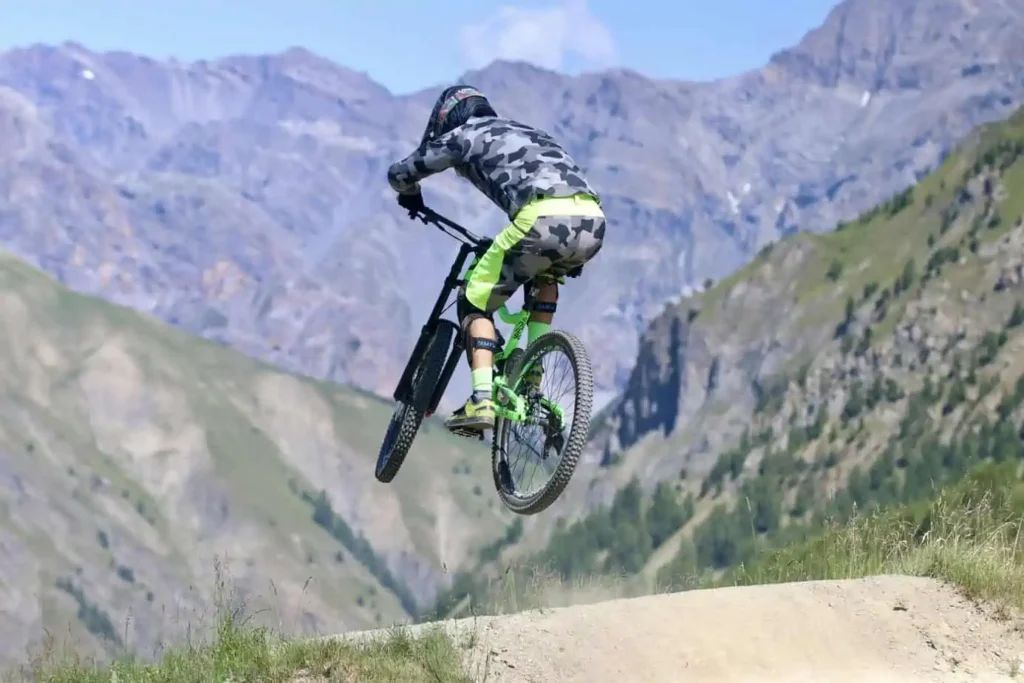


Riding Style: Endurance vs. Extreme Tricks and Jumps
The difference between mountain bikes and BMX bikes also lies in their intended riding styles, catering to endurance riding and extreme tricks and jumps, respectively.
Mountain Bike Riding Style:
Mountain bikes are designed for endurance riding and off-road adventures. They are built to handle long distances, challenging terrains, and steep ascents and descents.
Mountain bike riders often seek to explore trails, mountains, and forests, enjoying the thrill of nature and pushing their limits on technical sections.
These bikes are equipped with features like multiple gears, wide tires with knobby treads for better traction, and suspension systems for smoother rides over rough surfaces.
Mountain bike riders focus on building endurance, improving climbing abilities, and conquering difficult trails.
BMX Riding Style:
BMX bikes, on the other hand, are tailored for extreme tricks and jumps in skate parks and urban environments. BMX riders prioritize agility, control, and the ability to perform aerial tricks, spins, and jumps on ramps and obstacles.
These bikes have a compact and durable frame, single-speed drivetrain, and small, knobby tires for enhanced maneuverability. BMX riders often engage in freestyle and stunt riding, aiming to perfect their skills and showcase creativity through jaw-dropping tricks.
In summary, mountain bikes are intended for endurance riding on challenging off-road terrains, while BMX bikes are focused on extreme tricks and jumps in skate parks and urban environments.
The choice of riding style dictates the type of bike a rider chooses to match their preferences and skill set.
Components: Gearing, Brakes, and Handlebars Compared
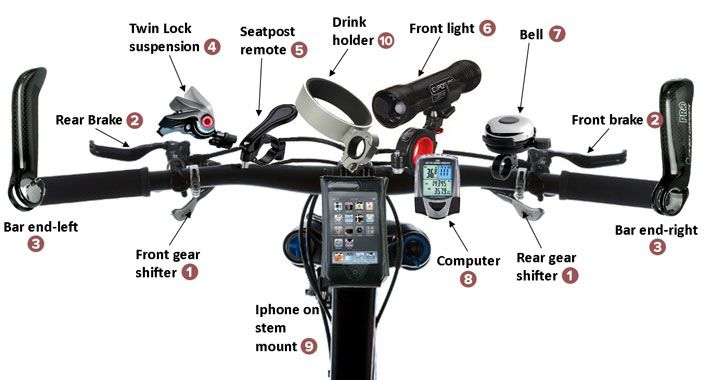


Components: Gearing, Brakes, and Handlebars Compared
When comparing mountain bikes and BMX bikes, one significant difference lies in their components, particularly in gearing, brakes, and handlebars.
Gearing: Mountain Bikes:
Mountain bikes are equipped with a wide range of gears, usually ranging from 1 to 3 front chainrings and 7 to 12 rear cogs. This gearing system allows mountain bike riders to tackle varying terrains, including steep climbs and fast descents.
The multiple gears provide the versatility to adapt to different trail conditions and maintain a comfortable pedaling cadence.
BMX Bikes:
BMX bikes typically have a single-speed drivetrain with one front chainring and one rear cog.
The single-speed setup simplifies maintenance and offers direct power transfer, which is ideal for the quick bursts of speed required for tricks and jumps in skate parks.
Brakes: Mountain Bikes:
Mountain bikes are commonly equipped with disc brakes, offering powerful and consistent stopping performance in all weather conditions.
The disc brakes provide better modulation and control, crucial for technical descents on rugged trails.
BMX Bikes:
BMX bikes often feature U-brakes or caliper brakes, offering reliable stopping power for the fast and agile movements required in skate parks.
While not as powerful as disc brakes, they are sufficient for the lower speeds and shorter distances of BMX riding.
Handlebars: Mountain Bikes:
Mountain bikes usually have wider handlebars, allowing for better control and stability when navigating rough terrain. The wider stance provides more leverage, making it easier to steer through obstacles and maintain balance.
BMX Bikes:
BMX bikes come with narrower handlebars, offering increased maneuverability for performing tricks and jumps. The narrower profile enables BMX riders to execute precise movements and rotations during aerial stunts.
In conclusion, the components of mountain bikes and BMX bikes differ to cater to their specific riding styles. Mountain bikes feature a wide range of gears, disc brakes, and wider handlebars for endurance riding on challenging terrains.
In contrast, BMX bikes have a single-speed drivetrain, U-brakes or caliper brakes, and narrower handlebars for extreme tricks and jumps in skate parks and urban environments.
The choice of components depends on the rider’s intended use and preferences.
Adventure and Thrills: Exploring Mountain Biking and BMX Riding



Adventure and Thrills: Exploring Mountain Biking and BMX Riding
Mountain biking and BMX riding are two exhilarating cycling disciplines that offer unique adventures and thrills for enthusiasts seeking different experiences on two wheels.
Mountain Biking:
Mountain biking involves riding on off-road terrains such as mountains, forests, and trails.
It offers a thrilling and challenging experience, where riders navigate through rugged landscapes, steep descents, and technical obstacles.
Mountain bikes are designed with sturdy frames, front and rear suspension systems, and knobby tires to handle the rough terrain and provide a smooth ride.
The adventure in mountain biking lies in exploring natural landscapes, encountering breathtaking scenery, and conquering various trail difficulties.
Riders can choose from cross-country, downhill, enduro, and trail riding, each offering unique challenges and rewards.
Mountain biking requires endurance, technical skills, and the ability to adapt to changing trail conditions, making it a popular choice for outdoor enthusiasts and nature lovers.
BMX Riding:
BMX riding, on the other hand, is all about performing tricks, jumps, and stunts in skate parks, dirt tracks, and urban environments.
BMX bikes are characterized by their compact frames, single-speed drivetrain, and sturdy construction, allowing riders to execute precise movements and aerial maneuvers.
The thrills in BMX riding come from the adrenaline-pumping jumps, spins, and grinds. BMX riders showcase their skills in performing tricks like tailwhips, 360s, and bunny hops, often in high-flying stunts.
BMX competitions and events attract spectators who cheer on riders as they demonstrate their creativity and agility on the bike.
In conclusion, both mountain biking and BMX riding offer unique adventure and thrills in their respective domains.
Mountain biking provides an outdoor escapade through challenging terrains, while BMX riding delivers high-octane excitement with gravity-defying tricks.
Whether exploring natural landscapes or mastering aerial stunts, both disciplines bring joy and excitement to cycling enthusiasts worldwide.
Choosing the Right Bike: Factors to Consider for Your Preferences
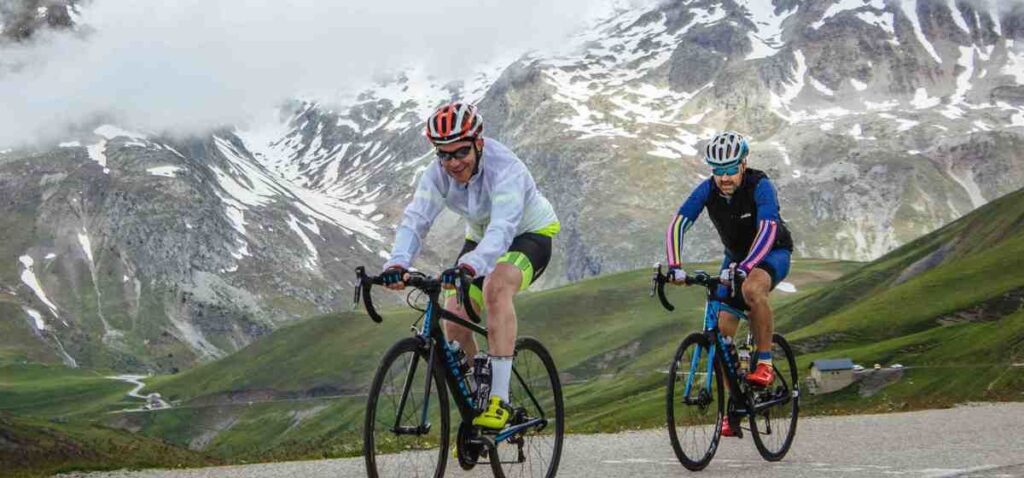


Choosing the Right Bike: Factors to Consider for Your Preferences
When it comes to selecting the perfect bike, several factors come into play to ensure it matches your preferences and suits your riding style.
Whether you’re a beginner or a seasoned cyclist, understanding these key considerations can lead you to the ideal two-wheeled companion.
Riding Purpose:
Determine the primary purpose of your bike. Are you looking for a bike for daily commuting, leisurely rides, off-road adventures, or intense mountain trails?
Each riding purpose requires a specific type of bike, such as road bikes for commuting, hybrid bikes for versatile use, mountain bikes for off-road trails, and more.
Terrain and Surface:
Consider the type of terrain you’ll be riding on most frequently. If you’ll be mainly on smooth roads or paved surfaces, a road bike or a hybrid bike with thinner tires may be ideal.
For off-road enthusiasts, mountain bikes with robust frames and suspension systems provide better handling on rough terrains.
Bike Fit and Size:
Ensuring a proper bike fit and size is crucial for your comfort and performance. Consider your height, inseam length, and reach when choosing the right frame size.
A well-fitted bike prevents discomfort and reduces the risk of injury during rides.
Frame Material:
Bike frames are made from various materials like aluminum, steel, carbon fiber, and titanium. Each material has its characteristics, affecting factors such as weight, durability, and price.
Choose a frame material that aligns with your preferences and budget.
Gearing and Drivetrain:
Gearing determines the ease of pedaling and the range of speeds available to you. Bikes with multiple gears are suitable for hilly terrains and challenging rides, while single-speed bikes provide simplicity and low maintenance.
Brakes:
The type of brakes also impacts your biking experience. Common options include rim brakes, disc brakes, and hydraulic disc brakes. Disc brakes, especially hydraulic ones, offer better stopping power and performance in various weather conditions.
Suspension (for Off-Road Bikes):
For mountain bikers, the presence and quality of suspension systems are critical. Full-suspension bikes provide more comfort and control on rough trails, while hardtail bikes are simpler and lighter.
Budget:
Set a budget range for your bike purchase. Bikes come in a wide price range, and understanding your budget can help narrow down your choices without compromising on quality.
In conclusion, choosing the right bike involves considering your riding purpose, terrain preferences, bike fit, frame material, gearing, brakes, suspension (if applicable), and budget.
With these factors in mind, you can make an informed decision and find the perfect bike that matches your preferences and delivers a rewarding cycling experience.
Comparison Table Between Mountain Bike and BMX
| Aspect | Mountain Bike | BMX |
| Purpose | Off-road trails and mountains | BMX tracks and skateparks |
| Terrain | Rough and challenging surfaces | Smooth and flat surfaces |
| Frame and Construction | Sturdy and durable | Lightweight and compact |
| Tires | Wide with aggressive tread | Narrow with smooth tread |
| Suspension | Full-suspension or hardtail | No suspension |
| Gearing | Multiple gears for various terrain | Single-speed for simplicity |
| Brakes | Disc brakes or V-brakes | U-brakes or caliper brakes |
| Handlebars | Wide and upright for control | Narrow and low for tricks |
| Riding Style | Endurance and technical riding | Extreme tricks and jumps |
| Adventure and Thrills | Exploring mountains and nature | Skatepark and trick riding |
| Suitable for | Trail riding, cross-country, downhill | Trick riding, street riding |
The table highlights the key differences between mountain bikes and BMX bikes. Mountain bikes are designed for off-road adventures, featuring a sturdy frame, wide tires with aggressive tread, and suspension options for rough terrain.
On the other hand, BMX bikes are perfect for skateparks and performing tricks, boasting a compact and lightweight frame, narrow tires with smooth tread, and no suspension.
The gearing, brakes, handlebars, and riding styles also differ, making each bike suitable for specific activities and terrain.
Best Between The Two
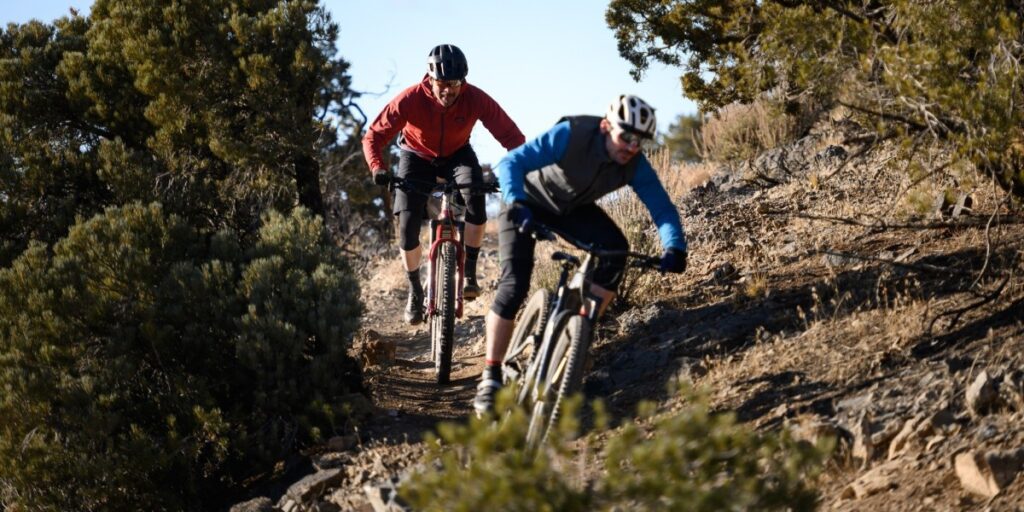


It’s challenging to determine which one is definitively “best” between mountain bikes and BMX bikes, as it depends on individual preferences and intended use.
Mountain bikes are excellent for off-road adventures, trail riding, and tackling rough terrains, while BMX bikes are perfect for skatepark tricks and racing on smooth surfaces.
The “best” bike for you would depend on your riding style and the type of activities you enjoy. If you love exploring nature and diverse terrains, a mountain bike may be the better choice.
On the other hand, if you prefer performing stunts and tricks in skateparks, a BMX bike might be more suitable. Ultimately, both types of bikes offer unique experiences and fun, so it’s essential to choose the one that aligns with your interests and riding preferences.
Conclusion
It’s challenging to determine which one is definitively “best” between mountain bikes and BMX bikes, as it depends on individual preferences and intended use.
Mountain bikes are excellent for off-road adventures, trail riding, and tackling rough terrains, while BMX bikes are perfect for skatepark tricks and racing on smooth surfaces.
The “best” bike for you would depend on your riding style and the type of activities you enjoy. If you love exploring nature and diverse terrains, a mountain bike may be the better choice.
On the other hand, if you prefer performing stunts and tricks in skateparks, a BMX bike might be more suitable. Ultimately, both types of bikes offer unique experiences and fun, so it’s essential to choose the one that aligns with your interests and riding preferences.
FAQ’s
Can you use a BMX as a mountain bike?
Using a BMX as a mountain bike is not recommended. BMX bikes lack the necessary components and features for off-road terrain, making them unsuitable and unsafe for mountain biking.
Which bike is better BMX or mountain?
The better bike depends on your riding preferences. BMX bikes are ideal for tricks and jumps in skateparks, while mountain bikes excel in off-road trails and diverse terrains.
Is A BMX faster than a mountain bike?
In general, mountain bikes are faster on rough and uneven terrains, while BMX bikes are quicker and more maneuverable on flat surfaces and in skateparks.
What BMX means?
BMX stands for Bicycle Motocross. It is a type of bike used for off-road racing and freestyle riding, known for its smaller size and single-speed design.
Do BMX bikes have gears?
Most BMX bikes do not have gears. They typically have a single-speed drivetrain, which allows for simplicity and ease of maintenance, making them ideal for freestyle riding and racing.



Welcome to Bikegenics, where passion meets performance! We are a leading online destination for all things related to mountain biking, dedicated to providing you with top-notch gear, expert advice, and an immersive community to fuel your two-wheeled adventures. With a commitment to excellence and a deep love for the sport, we strive to elevate your biking experience to new heights.
